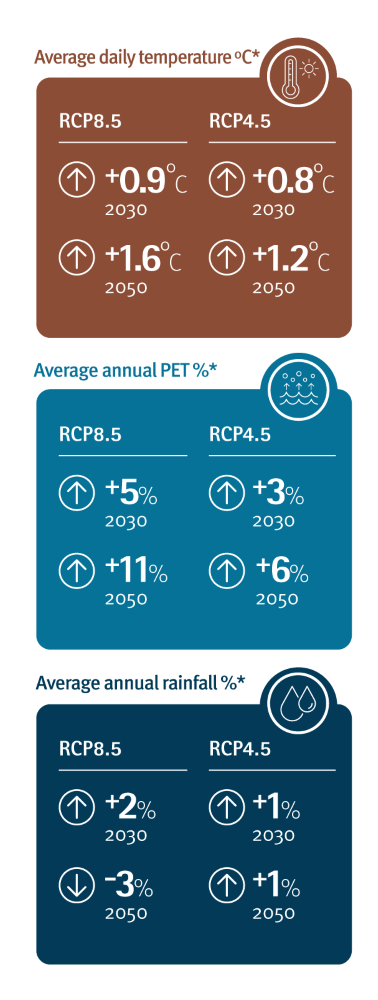Climate resilience in the Whitsunday water plan area
There have been changes in rainfall and climate since the current Whitsunday water plan was established in 2010.
We will review the hydrology within the water plan area (the scientific study of how water moves, is distributed, and is managed) to determine if and how water availability has changed.
We will undertake technical assessment to evaluate possible future impacts of climate variability to water availability in the region.
Learn how we manage climate variability risks.
Queensland’s water plans in a variable and changing climate report (PDF, 19.0MB) identifies climate impacts across each of the water plan areas.
For example, pages 70 and 71 show the below snapshot of observed and projected climate trends for the Whitsunday water plan area. This snapshot includes 2 scenarios represented by a Representative Concentration Pathway (RCP) of 8.5 (high greenhouse gas emissions) and 4.5 (lower greenhouse gas emissions) for the years 2030 and 2050. They indicate:
- average daily temperatures are projected to increase between 1 and 1.6 degrees centigrade
- average annual rainfall is projected to increase between 3 and 11%
- average annual potential evapotranspiration (PET) is projected to increase in 2030 by 2% and decrease by 3% by 2050 in the high emissions scenario
- PET is projected to increase by 1% in the lower emissions scenario.

Snapshot of observed and projected climate trends for the Whitsunday water plan area